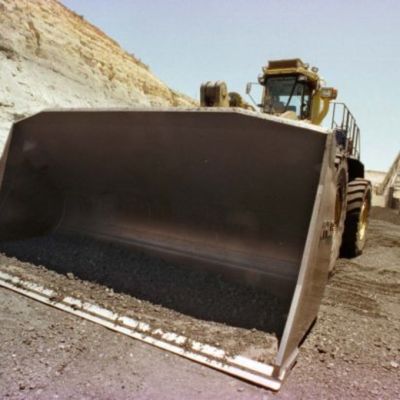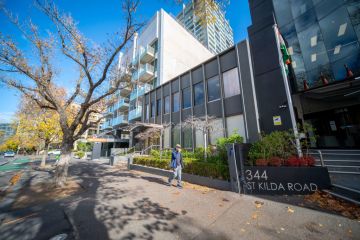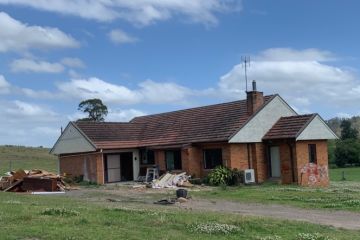Perth house price bust: What can Sydney and Melbourne learn from the west?
Debate is again raging about the housing bubble: when will it pop, how can we stop it, does it even exist?
But the one irrefutable fact driving the conversation is the runaway train that is Sydney and Melbourne property prices; and what will happen if it – at some point – comes off its tracks.
Across the Nullarbor, Australia has a case study of just that: Perth was a major city market that saw a considerable boom, followed by a significant bust.
Higher unemployment, a significant decline in population growth and an exodus of workers because of the slowdown in the resources sector saw Perth prices fall 7.3 per cent since December 2014, according to Domain Group data. Perth home owners who bought during the peak have watched the value of their property drop in some cases by hundreds of thousands of dollars.
And though the variables between WA’s economy and that of NSW and Victoria are completely different, there are a few lessons that east can learn from west.
“It is apples and oranges,” AMP chief economist Shane Oliver said. “They had a mining boom which then when bust, we don’t. The economy in Sydney a lot more diverse. But I think the lesson really is that good times end, prices do fall and in some ways, Perth is a timely reminder of that.”
Supply and demand
The median price in Perth peaked at the end of 2014 and has been declining slowly ever since, according to Steven Rowley, associate professor and director of Australian Housing and Urban Research Institute’s Curtin Research Centre. He described the state of the Perth market as “difficult”. Although he did note a significant variation between postcodes, meaning plenty of suburbs saw price rises over the past couple of years, while others declined more quickly than the median.
Some suburbs have also been hit particularly hard hit by mortgage stress, according to the latest report by global ratings agency Standard & Poor’s. Butler, a newer Perth suburb popular with young families – many of whom would have been fly-in fly-out workers – had the third largest percentage of mortgage arrears in the country, at 5.12 per cent.
Many first-home buyers who bought on Perth’s fringe during the boom saw the value of their properties drop because policy incentives pushed first-timers to buy new.
The resources sector slowdown coincided with a record period of new dwelling construction in Perth, meaning the drop in demand coincided with increased supply, according to Mr Rowley.
“[The Perth market] is a normal market reaction to falling demand and increased supply,” Mr Rowley said. “As demand increases and new supply falls, prices will start to recover slowly. The question is will population growth get back to the levels seen in the early part of this decade and will the economy recover sufficiently to generate confidence in the housing market and stimulate both investors and owner purchasers?”
In Sydney and Melbourne’s favour, a huge population boom and high level of overseas investment demand puts the two cities in a better position than Perth.
The risks in Sydney and Melbourne
The NSW and Victorian economies are much more diverse than WA’s, where 50 per cent of the economy relied on exports, according to NAB chief economist Alan Oster. The same levels of unemployment that WA saw would therefore be unlikely.
“You’ve got to look out for something that might kill economy and internally that’s very difficult to see at present,” Mr Oster said. Even if the massive construction industry was to decline, he said, industries such as investment, health, education and services could offset it.
“It’s more likely, to the extent you’re going to have anything, that it’s going to come through a China shock or a Trump shock [in Sydney and Melbourne], there’s nothing internally causing that sort of grief.”
Mr Rowley agreed a collapse was unlikely, unless there was some sort of economic or policy shock, particularly affecting investor demand; domestic or overseas.
Price drops don’t mean affordability
For those hoping for a Perth-style drop for prices in Sydney and Melbourne, Mr Rowley noted that price falls did not mean housing was any more affordable for those on low to moderate incomes.
“In Perth, three years of falling rents and prices has made the market no more affordable to those in the lower income groups,” he said.
“For those on moderate and steady incomes the situation has certainly improved, but those most in need of affordable housing are really no better off.”
Interest rates
The interest rate level has been a main saver of the Perth market, according to REIWA president Hayden Groves, who said the market was a lot more robust than those on the other side of the country may think.
“[Low interest rates] meant that unless you were absolutely compelled to sell, you didn’t have to,” Mr Groves said. “You had equity to play with, even if things got tough and you lost your job, you could fairly comfortable refinance.”
If interest rates stayed low, Mr Groves said, and Sydney and Melbourne prices did drift away, it would be a relatively soft landing. But he said those that got into the market as speculative investors within the past 12 months may find themselves losing the breakaway capital growth they’d seen in the short term.
“The markets are so very different, it’s hard to draw precise parallels, but one lesson is: don’t get caught up in the hype.
“As an investor, when you’re hearing those barbecue or water cooler conversations saying, ‘I bought investment property and it was so easy I bought another’, those comments fuel speculative investment,” he said. “My advice in Sydney and Melbourne is be cautious and make sure you diversify.”
We recommend
We thought you might like
States
Capital Cities
Capital Cities - Rentals
Popular Areas
Allhomes
More









